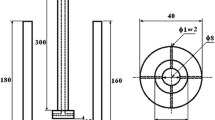A method for hydraulic fracturing of a formation that includes injection of a fracturing fluid with sealing balls to reduce filtration of the fracturing fluid is known. The balls are selected so that fissures into which fracturing fluid is diverted are reliably sealed temporarily. The problem of sluicing and returning the balls arises when the well is put into operation. Steel balls or high-molecular-mass polymeric materials are currently most widely used. Sluicing high-density steel balls is difficult. Polymer balls are easily deformed so they are also difficult to return. The present work proposes the use of aluminum-alloy balls and studies the electrochemical dissolution mechanism of the material in the formation. The developed aluminum-alloy balls had rather good solubility and high mechanical properties. Use of sealing balls made of this material provided effective transfer of the working pressure during hydrofracturing and avoided the problem of returning the balls. Also, high-strength alloys that can be dissolved could find applications in various fields.
Similar content being viewed by others
References
Tang Ying, Tang Xuan, Wang Guangyuan, et al., Geology, 30, No. 3, 393-399 (2011).
Li Qinghui, Chen Wei, Jin Yan, et al., Spec. Oil Gas Reservoirs, 19, No. 6, 1-8 (2012).
K. Mahmoodi and B. Alinejad, Int. J. Hydrogen Energy, 35, No. 2, 5227-5232 (2010).
Lin Jinping, Effect of Impurity Element Gallium on Microstructure and Properties of Industrial Pure Aluminum and Aluminum Alloy, Shanghai Jiaotong University, Shanghai, 2009.
H. Nie, M. Schoenitz, and E. L. Dreizin, Int J Hydrogen Energy, 37, No. 4, 11035-11045 (2012).
J. Patel and K. Morsi, J Alloys Compd., 540, No. 4, 100-106 (2012).
Fan Meigiang, Liu Yingya, Yang Lini, et al., Chem. J Chin. Univ., 29, No. 2, 356-359 (2008).
M. Q. Fan, L. X. Sun, and X. Fen, Int. J Hydrogen Energy, 32, No. 1, 2809-2815 (2007).
Acknowledgments
The work was financially supported by the National Natural Science Foundation of China (No. 41772144), Northeast Petroleum University Fund for Young Scientists (QJ121624), Northeast Petroleum University Talent Engineering Research Startup Fund (RC201703), and Northeast Petroleum University National Fund (XM123423).
Author information
Authors and Affiliations
Corresponding author
Additional information
Translated from Khimiya i Tekhnologiya Topliv i Masel, No. 6, pp. 96 — 99, November — December, 2018.
Rights and permissions
About this article
Cite this article
Liu, J., Shao, Z. & Zhang, X. Development of a High-Strength Soluble Aluminum Alloy and Its Application in Oil Pressure Cracking. Chem Technol Fuels Oils 54, 818–823 (2019). https://doi.org/10.1007/s10553-019-00992-z
Published:
Issue Date:
DOI: https://doi.org/10.1007/s10553-019-00992-z




